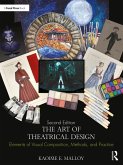This book examines why, when, how and where the scenic stage began in England. Little has been written about the development of theatrical scenery and how it was used in England in the seventeenth century, and what is known about the response to this innovation is fragmentary and uncertain. Unlike in Italy and France where scenery had been in use since the sixteenth century, the general public in England did not see plays presented against a painted location until Sir William Davenant presented The Siege of Rhodes at Lincoln's Inn Fields in 1661. Painted landscapes or seascapes, perspective views of cities or palaces, lighting effects, gods or goddesses flying down on to the stage in a chariot, all these had only been seen before on the masque stage at court or in the occasional private play performance. This study argues that Sir William Davenant (1606-1668) was involved almost from the beginning of the process and that his influence continued after his death; that, although painted scenery as such would undoubtedly have appeared on the public stage after 1660, it would not have been in the same way, for Davenant made particular positive contributions which brought about certain changes in both the presentation and reception of plays which would not have happened as they did without his work and influence. This is new work which uses dramaturgical and scenographical analysis of selected plays and masques, against known theatrical history, to discover how the staging of painted settings was organised from c1605 to c1700. This kind of investigation into the links between masque staging and the staging of plays has not been done in quite this way before. The study begins with Davenant's involvement with Inigo Jones and John Webb. It analyses the staging of the court masques and discusses what Davenant took from this and how he used the information. It suggests that the move towards verisimilitude in the drama on the scenic stage was due in part to Davenant's imaginative use of certain of the physical components of masque staging in presentations by the Duke's Company. It argues that he encouraged dramatists to integrate the scenery into their plots, particularly to provide for disclosures and discoveries, in ways not possible before. How, in so doing, he implicitly changed the stage conventions of time and place which audiences had accepted from the platform stage. It also argues that the parallel development of operatic spectacle derived mainly from the use by Killgrew and the King's Company of the techniques for engineering the spectacular effects of the transformation scenes of the masque stage to embellish the heroic drama by Dryden and others. It suggests that the two staging methods combined in the later seventeenth century to give more sophisticated ways of using the scenery and thus involved the scenic stage with the dialogue and the action in all genres, but that such experimentation ended when financial and commercial considerations made it no longer viable. Nevertheless it concludes that, by the eighteenth century, theatre practitioners had learnt to use the stage craft and mechanical techniques of the masque stage to integrate the visual with the aural aspects of a production, and that dramatists, once concerned solely with the aural expression of their theme, had become playwrights who allowed for the visual elements in their texts. Over fifty illustrations exemplify the discussion. This is an important book in the history of theatre, essential background for the staging of the court masque, and for the scenography of the Restoration theatre.
Hinweis: Dieser Artikel kann nur an eine deutsche Lieferadresse ausgeliefert werden.
Hinweis: Dieser Artikel kann nur an eine deutsche Lieferadresse ausgeliefert werden.








